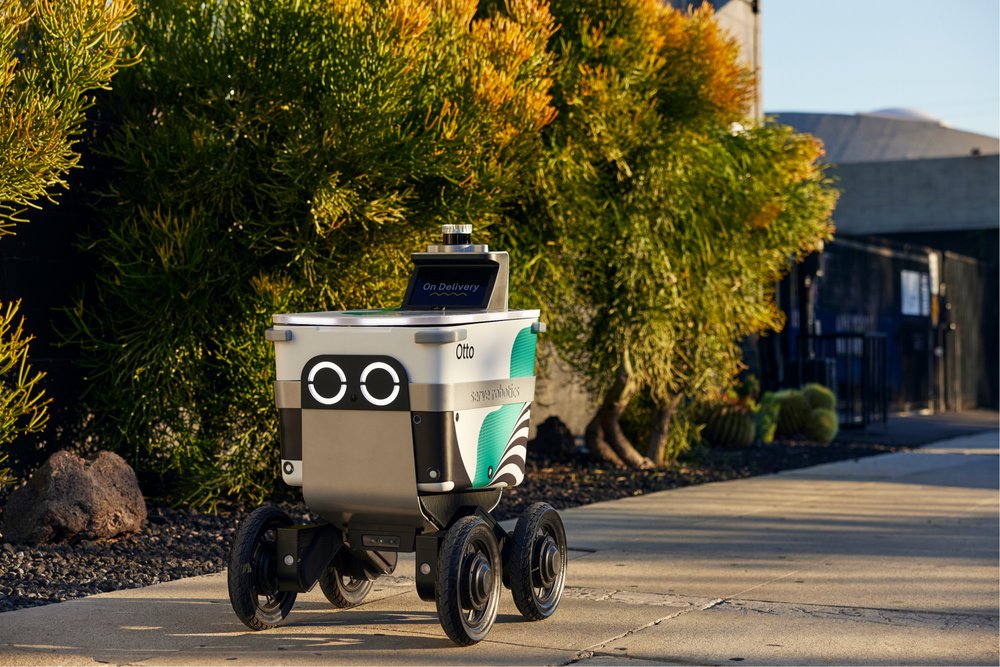
Uber’s Serve Robotics and Alphabet’s Wing have announced a new partnership aimed at revolutionizing last-mile delivery by combining sidewalk delivery robots with flying drones. This dual delivery system will be trialed in Dallas, Texas, in the coming months, with the goal of addressing the limitations each technology faces individually, TechCrunch reports.
Serve Robotics and Wing are betting that this collaboration could extend delivery coverage, increase efficiency, and automate more of the delivery process without requiring significant changes to merchant workflows or infrastructure.
Serve Robots Pass Deliveries to Wing Drones
Serve Robotics’ sidewalk bots typically handle deliveries within a two-mile radius, while Wing’s flying drones can cover up to six miles but struggle in dense urban environments or when they need to pick up items directly from restaurants.
To overcome these challenges, the partnership envisions a handoff system where:
- Serve’s robots will pick up orders from restaurant or store curbside locations.
- The robots will transport the orders a few blocks to a Wing “AutoLoader.”
- Wing’s drones will then collect the packages from the AutoLoader and complete the delivery to customers farther away.
Wing drones can carry up to five pounds and reach speeds of 65 mph.
Details on Merchant Participation and Locations Remain Unclear
The test will begin with a select number of customer orders, though details about the specific restaurants or merchants participating, the locations of the AutoLoaders, and the number of robots and drones involved remain undisclosed.
Serve and Wing have hinted that existing merchant partners will be part of the trial, but each company deferred to the other when pressed for specifics. The companies have also not revealed the exact locations in Dallas where deliveries will occur or whether the infrastructure, such as AutoLoaders, will be permanent.
Serve CEO Ali Kashani believes that the combination of robots and drones offers a unique solution to delivery challenges, particularly in dense urban areas where drones are limited by landing space, while robots struggle with distance. Kashani emphasized that the robot-to-drone handoff will be asynchronous, meaning the Serve bot can drop off the order at the AutoLoader, and the Wing drone can collect it later, adding flexibility to the process. This multimodal approach allows Serve and Wing to offer a more comprehensive, automated delivery system.
The two companies have already begun working on integrating their technologies, according to Wing CEO Adam Woodworth, who made the announcement during the Up Summit event in Bentonville, Arkansas. He highlighted how the collaboration could add miles of range to delivery services by combining the capabilities of the two technologies. Wing also introduced its newest drone at the event, along with plans to expand its services into healthcare, although this trial with Serve Robotics focuses solely on consumer deliveries.
Both Companies Bring Extensive Experience
Serve currently delivers for 300 restaurants in Los Angeles, working with platforms like Uber Eats and 7-Eleven, and recently added Shake Shack to its list of partners. Wing, meanwhile, has an ongoing collaboration with Walmart in Dallas and has tested drone deliveries with DoorDash and Wendy’s in Virginia. However, Wing confirmed that this new partnership would not involve Walmart.
The venture comes at a critical time for Serve Robotics, which went public six months ago through a reverse merger, raising $40 million in gross proceeds. The company also secured an additional $20 million through a private placement and warrant exercise, providing it with enough funds to support its expansion goals. Serve plans to deploy an additional 250 robots in Los Angeles by the first quarter of 2025 and expand to 2,000 robots across multiple U.S. cities by the end of next year through its contract with Uber Eats.
Whether this pilot program will evolve into a full-fledged commercial service remains to be seen, but the companies are optimistic about the potential for robots and drones to transform last-mile delivery. By working together, they hope to solve the logistical challenges of urban delivery, where both flying and sidewalk-based solutions have their respective limitations.
Featured Image courtesy of Serve Robotics
Follow us for more tech news updates.
